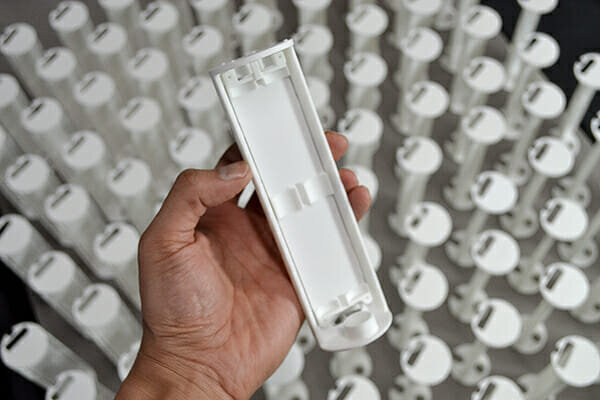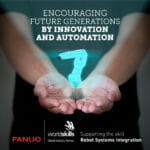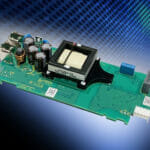Kongsberg Maritime is an international technology group working in the maritime, defence, aerospace and digital sectors. Kongsberg is at the forefront of pushing technology in extreme conditions, so it comes as no surprise that additive manufacturing has a role in their design process. As additive manufacturing grows and becomes a viable, recognised option for producing custom parts with a finish close to injection moulded parts, more and more design engineers are exploring and adopting selective laser sintering (SLS) technology to produce innovative products. As a result of this growth, the more engineers demand from the technology, the more investment is made to advance the capabilities of the method. Kongsberg Maritime delivers products and systems to merchant vessels and offshore installations for positioning, navigation, automation and handling systems, as well as products and systems for seabed surveying and monitoring, and fishing vessels and fisheries research. 3DPRINTUK specialise in low-volume production through additive manufacturing and in particular SLS. By 3D printing parts in SLS Nylon P12, and with very few restrictions in design, manufacturers can create components with reduced weight while maintaining strength. Users of the innovative method save on manufacturing costs thanks to material savings and assembly time reduction. In addition, clever design means that the number of components gets reduced and prototyping that used to take weeks can be done in days, in multiple variations, all branded with unique part numbers. Robert Kovacs, Senior Subsea Design
Engineer at Kongsberg Maritime approached 3DPRINTUK when they started a new project to design a chassis for a scientific subsea instrument used in underwater positioning and mapping. “The part is a multi-functional product chassis, not just a simple bracket to join two things together. It has clever features and functionality that we would not get from a similar metal or injection moulded part,” explained Robert. “The chassis flexes extensively to allow a heat shrink sleeve to be placed around battery cells and a PCB, which simplifies assembly tremendously. To secure the product during transport and handling, a tiny slide-bolt arrangement allows for a zip-tie to be inserted, again greatly saving handling time and reducing risk.” Small printed extrusions act as standoffs, screw guides and screw anchors which make the whole assembly extremely rigid. Features such as these cost nothing during printing but save greatly on handling, assembly and repair. “Right from the start, deciding to 3D print this pivotal part in a new design meant that we were able to shrink the size of the product while integrating features and functionality that are simply not available through other manufacturing methods,” continued Robert. Robert was also able to save money on the cost of other products by nesting parts. As well as price breaks for higher quantities, 3DPRINTUK allow users to nest parts around one another to take advantage of any unused space. The smaller the space users take up within the printer, the less they are charged. Summing up his experience of additive manufacturing, Robert concluded: “I believe that the biggest advantages when 3D printing parts are the time savings thanks to faster tooling and assembly, along with the ability to make far more intelligent parts. We would, of course, have these features and advantages if this part was injection moulded. But it is not possible to make an injection mould tool with all these features in one part, as it has too many details and undercuts in too many different directions.”








